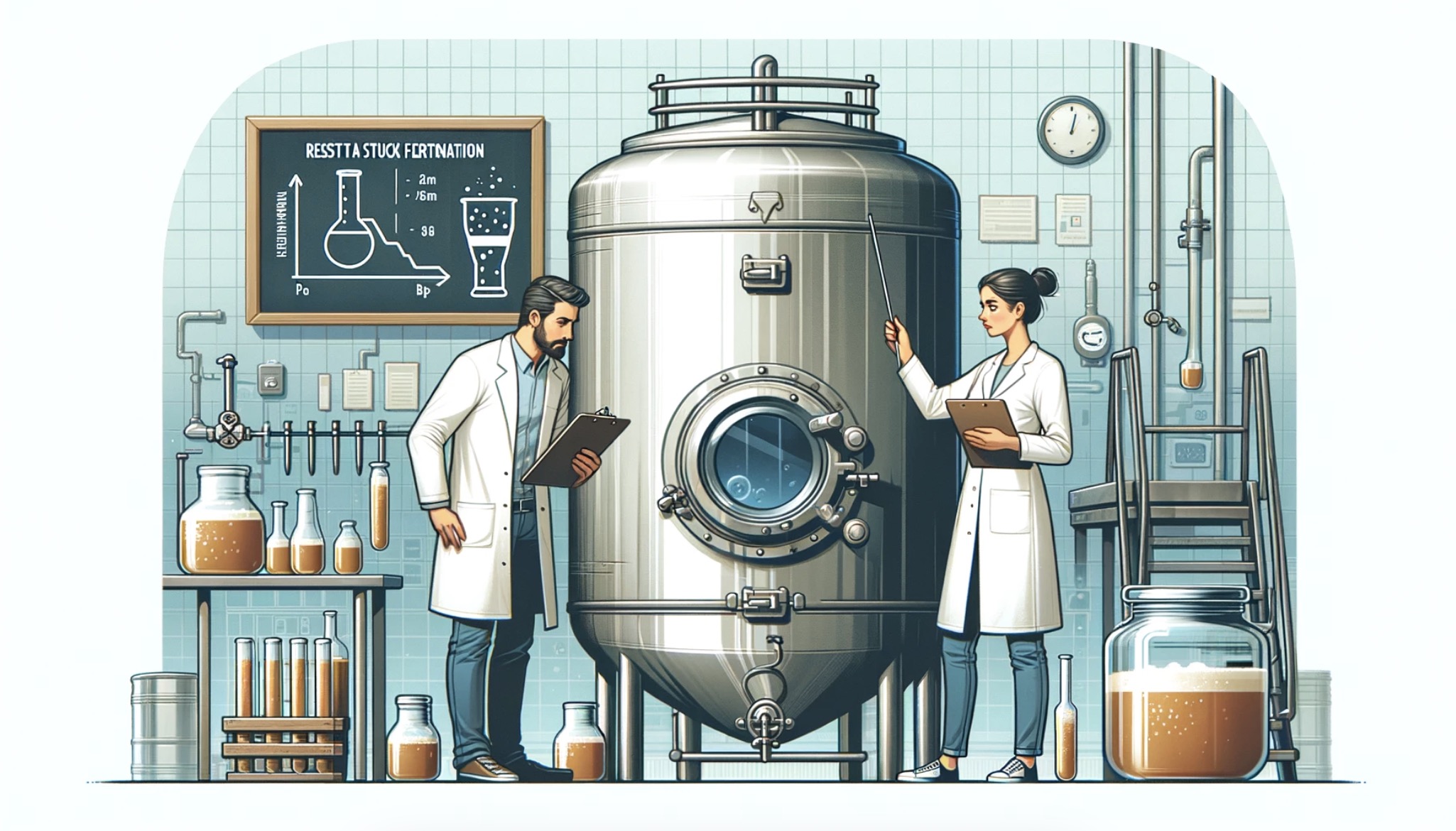A terzo of wine refers to a measurement of wine, specifically a third of a liter or approximately 11.3 ounces. The terzo is a traditional Italian measurement, and it’s most commonly used in the context of wine bars and restaurants in Italy.
In this blog post, I will discuss a variety of topics related to the terzo of wine, including its history, how it compares to other wine measurements, and the benefits and drawbacks of this particular size of wine serving.
I will also share some personal experiences and advice from my time as a brewer and wine enthusiast. So let’s dive in and learn more about the terzo of wine!
The Origin of the Terzo
The terzo has its roots in Italian history and has been used as a measurement for wine for centuries. It is believed to have originated during the Roman Empire when wine was commonly consumed as a part of daily life.

The terzo, which literally means “one-third,” was used to measure wine in order to ensure fair distribution among the people. The measurement was typically used for the more expensive wines, as they were often reserved for the upper classes.
Today, the terzo is still used in Italy, particularly in wine bars and restaurants. It is a popular serving size for those who want to enjoy a moderate amount of wine without committing to a larger serving like a half-liter or full bottle.
Comparing the Terzo to Other Wine Measurements
When it comes to wine measurements, there are several different options to choose from, each with their own unique history and purpose. Here is a brief comparison of the terzo to some other common wine measurements:
– Glass: A standard glass of wine is typically 5 ounces (150 milliliters). This is the most common serving size for wine in restaurants and bars around the world. A terzo is equivalent to just over two standard glasses of wine.
– Carafe: A carafe is a container used to serve wine, typically holding between 16 and 33 ounces (500 to 1000 milliliters). A terzo is roughly equivalent to one-third of a smaller carafe.
– Half-bottle: A half-bottle of wine contains 12.7 ounces (375 milliliters), which is equivalent to approximately half a standard 750-milliliter bottle. A terzo is slightly less than a half-bottle.
– Bottle: A standard bottle of wine contains 25.4 ounces (750 milliliters). A terzo is equivalent to roughly one-third of a standard bottle.
The Benefits of a Terzo
There are several benefits to choosing a terzo of wine, particularly when dining out or enjoying a glass at a wine bar. Some of these benefits include:
– Moderation: A terzo is a moderate serving size, allowing you to enjoy a nice amount of wine without consuming too much. This is particularly helpful if you are trying to limit your alcohol intake or are simply looking for a smaller serving to accompany a meal.
– Variety: Choosing a terzo allows you to try multiple wines in one sitting without committing to a larger serving. This can be particularly enjoyable when visiting a wine bar with a diverse selection of wines to choose from.
– Cost: A terzo is typically less expensive than a half-liter or full bottle of wine, making it a more affordable option for those on a budget.
The Drawbacks of a Terzo
While there are several benefits to choosing a terzo of wine, there are also some drawbacks to consider. These include:
– Limited availability: The terzo is not as commonly used outside of Italy, so you may have difficulty finding this serving size in some restaurants and bars.
– Less value: While a terzo is generally less expensive than larger wine servings, it may not always be the best value. Some establishments may offer better deals on larger servings, so it’s important to compare prices before making a decision.
What does a Terzo of wine cost?
The price of a terzo of wine depends on the country and the type of wine. I’ve made an estimate of terzo costs based on the country of origin below:
| Country | Estimated Wine Price | Terzo cost |
|---|---|---|
| United States | $10 – $30 | $4.55 – $13.64 |
| United Kingdom | £6 – £20 | £2.73 – £9.09 |
| Australia | AUD 15 – AUD 40 | AUD 6.82 – AUD 18.18 |
| France | €5 – €15 | €2.27 – €6.82 |
| Italy | €8 – €20 | €3.64 – €9.09 |
| South Africa | ZAR 80 – ZAR 250 | ZAR 36.36 – ZAR 113.64 |
The cost is affected by numerous factors including:
- Type and Quality of Wine: The most significant factor influencing wine prices is the type and quality of the wine. Higher-quality wines, often referred to as premium or luxury wines, tend to be more expensive. They may come from renowned wine regions, be made from specific grape varieties, or have undergone special aging processes, which contribute to their higher cost.
- Local Taxes and Duties: In many countries, wine is subject to various taxes and import duties. These taxes can significantly impact the final retail price of a bottle of wine. Some countries have higher excise duties on alcoholic beverages, which can raise the cost for consumers.
- Distribution Costs: The cost of distributing wine from the producer to the retailer can also influence the final price. Distribution costs include transportation, warehousing, and other logistical expenses, which can vary depending on the country’s infrastructure and geography.
- Currency Exchange Rates: For countries that import wine, fluctuations in currency exchange rates can affect the cost. If a country’s currency weakens against the currency of the wine-producing country, it can lead to higher import costs and, in turn, higher wine prices for consumers.
- Local Market Demand: Wine prices can also be influenced by local market demand. In countries where wine consumption is high or where specific wine styles are popular, prices may be adjusted accordingly to reflect the demand-supply dynamics.
- Trade Policies: Trade policies and agreements between countries can impact the cost of imported wines. Tariffs and trade restrictions can make imported wines more expensive or limit the selection available to consumers.
- Production Costs: The cost of producing wine can vary depending on factors such as labor costs, vineyard location, winemaking techniques, and equipment used. These production costs can influence the final retail price of the wine.
- Brand and Marketing: Well-known wine brands with strong marketing efforts may command higher prices due to brand reputation and perceived value.
It’s important to note that the estimated prices in the table are rough averages and may not reflect the full range of wine prices in each country. Additionally, factors like inflation, changes in global trade, and shifts in consumer preferences can also impact wine prices over time. For the most accurate and up-to-date information, consumers should consult local retailers and wine shops in each specific country or region.
When I encountered a Terzo of Wine
As a brewer and wine enthusiast, I have had the opportunity to enjoy a terzo of wine on several occasions. One of my most memorable experiences was during a trip to Italy, where I had the opportunity to visit a small, family-owned wine bar in Tuscany.
I was able to sample a variety of local wines in terzo servings, which allowed me to fully appreciate the unique flavors and characteristics of each wine without feeling overwhelmed by larger servings.
My advice to fellow wine lovers is to embrace the terzo as a way to explore and appreciate a wider variety of wines. Whether you are visiting Italy or simply trying out a new wine bar, opting for a terzo can provide you with a memorable and enjoyable wine tasting experience.
Conclusion
In summary, a terzo of wine is a traditional Italian measurement equivalent to one-third of a liter or approximately 11.3 ounces. It offers a unique and moderate serving size for those looking to enjoy a variety of wines without committing to larger servings. While there are some drawbacks to consider, the terzo can provide a memorable and enjoyable wine tasting experience for enthusiasts and casual drinkers alike. Here are 10 key facts about the terzo of wine:
1. A terzo is equivalent to one-third of a liter or approximately 11.3 ounces of wine.
2. The terzo has its origins in Italian history, dating back to the Roman Empire.
3. The terzo is still used today in Italian wine bars and restaurants.
4. A terzo is roughly equivalent to just over two standard glasses of wine.
5. A terzo allows for moderation and variety in wine tasting experiences.
6. A terzo is generally less expensive than larger wine servings.
7. The terzo is not as commonly used outside of Italy, making it a unique and authentic way to enjoy Italian wine culture.
8. The terzo may not always offer the best value in terms of cost, so it’s important to compare prices before making a decision.
9. Embracing the terzo can lead to memorable wine tasting experiences, as I have personally experienced during my travels in Italy.
10. Opting for a terzo can encourage a greater appreciation for the diverse flavors and characteristics of different wines.
FAQs
How much is a bottle of wine?
The price of a bottle of wine can vary significantly based on various factors such as the type of wine, quality, region, brand, and vintage. In general, wine prices can range from a few dollars to several thousand dollars per bottle.
For everyday table wines, you can typically find options ranging from $5 to $20 per bottle. These wines are often produced in large quantities and are meant for casual consumption.
As you move up in quality, you can find wines in the $20 to $50 range. These wines may come from specific regions or vineyards, offering more complexity and craftsmanship.
For premium and collectible wines, prices can start from $50 and go well into the hundreds or even thousands of dollars per bottle. These wines are often produced in limited quantities, from prestigious vineyards, and may have undergone extensive aging or be from a particularly exceptional vintage.
It’s important to note that wine prices can also be influenced by factors like import taxes, distribution costs, and markups at restaurants or retailers. Additionally, certain rare or sought-after wines may command higher prices due to their scarcity or reputation.
Ultimately, the price of a bottle of wine depends on the specific wine you are interested in purchasing and the market in which you are buying it.
Is it OK to drink 1 bottle of wine?
It’s important to note that I am not a medical professional. Drinking one bottle of wine can have varying effects on individuals, depending on factors such as body weight, tolerance, overall health, and consumption speed. However, it’s generally considered excessive alcohol consumption for most people.
A standard bottle of wine typically contains around 750 milliliters, which is equivalent to approximately 5 standard drinks (based on a 5-ounce serving size). The Centers for Disease Control and Prevention (CDC) defines moderate drinking as up to one drink per day for women and up to two drinks per day for men. Exceeding these limits can increase the risk of various health issues, including liver disease, cardiovascular problems, and certain types of cancer.
Consuming a full bottle of wine in one sitting can result in a blood alcohol concentration (BAC) above the legal driving limit in many countries. It can impair coordination, judgment, and reaction time, increasing the risk of accidents and injuries. Additionally, excessive alcohol consumption can lead to short-term effects such as hangovers, dehydration, and disrupted sleep patterns.
It’s important to make informed decisions about alcohol consumption based on your own health, tolerance, and personal circumstances. If you have concerns or questions about alcohol consumption, it’s best to consult with a healthcare professional or seek advice from a licensed alcohol counselor.
What happens if I drink 1 bottle of wine a day?
Drinking one bottle of wine per day can have various effects on an individual’s health and well-being. It is important to note that the impact can vary depending on factors such as body weight, overall health, genetics, and lifestyle choices. Here are some potential outcomes:
1. Alcohol and calorie intake: Consuming one bottle of wine (typically containing around 750ml or 25 fluid ounces) per day can significantly increase your alcohol and calorie intake. Wine generally has an alcohol content of around 12-15%, meaning a single bottle may contain approximately 5-7 standard drinks. This can contribute to weight gain and potentially lead to alcohol-related health issues.
2. Increased risk of alcohol-related problems: Consistently consuming one bottle of wine daily can elevate the risk of developing alcohol-related problems. These may include alcohol dependency, liver disease, cardiovascular issues, certain cancers, pancreatitis, and mental health disorders.
3. Nutritional deficiencies: Regular wine consumption can displace essential nutrients from the diet, leading to potential deficiencies. Wine lacks many vital nutrients, and excessive alcohol intake can interfere with the body’s ability to absorb and utilize nutrients like vitamins, minerals, and antioxidants.
4. Impaired cognitive function: Chronic alcohol consumption, even at moderate levels, can impact cognitive function, memory, and overall brain health. Drinking one bottle of wine daily may contribute to difficulties with concentration, decision-making, and long-term cognitive decline.
5. Increased risk of alcohol use disorder: Consistently consuming a bottle of wine daily can lead to the development of alcohol use disorder (AUD). AUD is a chronic condition characterized by an inability to control or stop drinking, despite negative consequences. It is important to be aware of the signs of AUD and seek help if needed.
6. Disrupted sleep patterns: While alcohol may initially induce drowsiness, it can disrupt the quality of sleep. Drinking one bottle of wine daily can lead to difficulties falling asleep, increased nighttime awakenings, and reduced overall sleep quality.
7. Interactions with medications: Wine consumption can interact negatively with certain medications, including those for pain relief, anxiety, depression, and sleep disorders. It is crucial to consult a healthcare professional to understand potential interactions and risks.
It’s worth noting that moderate alcohol consumption, defined as up to one standard drink per day for women and up to two standard drinks per day for men, is generally considered low risk for most individuals. However, regularly consuming a full bottle of wine per day exceeds these guidelines and can lead to significant health consequences. It is always advisable to drink responsibly and consider the potential impact on your health.
Is 2 bottles of wine a week too much?
As an expert brewer, I can provide some information about alcohol consumption, but please note that I am not a medical professional. The question of whether 2 bottles of wine per week is too much depends on various factors, including an individual’s health, age, weight, tolerance, and any underlying medical conditions.
According to guidelines provided by many health organizations, moderate alcohol consumption for healthy adults is generally defined as up to one drink per day for women and up to two drinks per day for men. A standard drink is typically considered to be 5 ounces (148 ml) of wine.
Considering this guideline, 2 bottles of wine per week would amount to approximately 10 standard drinks. This level of consumption may exceed the recommended moderate drinking limits, especially for women. Heavy or excessive alcohol consumption can have negative effects on health, including an increased risk of liver disease, cardiovascular problems, certain cancers, and addiction.
It is important to note that individual tolerances and health conditions can vary significantly. If you have concerns about your alcohol consumption or its impact on your health, it is always advisable to consult with a healthcare professional who can provide personalized guidance based on your specific circumstances.
How much is one bottle of wine?
The price of a bottle of wine can vary significantly depending on several factors such as the region, quality, brand, production techniques, age, and rarity of the wine. In general, you can find a wide range of prices for wine, starting from as low as a few dollars to several thousand dollars per bottle.
For inexpensive or budget-friendly wines, you can typically find options in the $5 to $20 range. These wines are often mass-produced and may not have significant aging or complex flavors.
Mid-range wines, which offer better quality and more distinctive characteristics, usually range from $20 to $50 per bottle. These wines might come from specific regions or vineyards and can offer a more enjoyable and refined experience.
When it comes to premium or luxury wines, prices can soar significantly. These wines often come from renowned vineyards, have limited production, and can be aged for extended periods. Prices for premium wines can start around $50 and can go well into the hundreds or even thousands of dollars per bottle.
It’s worth mentioning that these price ranges are general guidelines, and there are exceptions in both directions. Additionally, prices can vary depending on the country, local taxes, import/export fees, and the place of purchase (e.g., retail store, restaurant, or winery).




